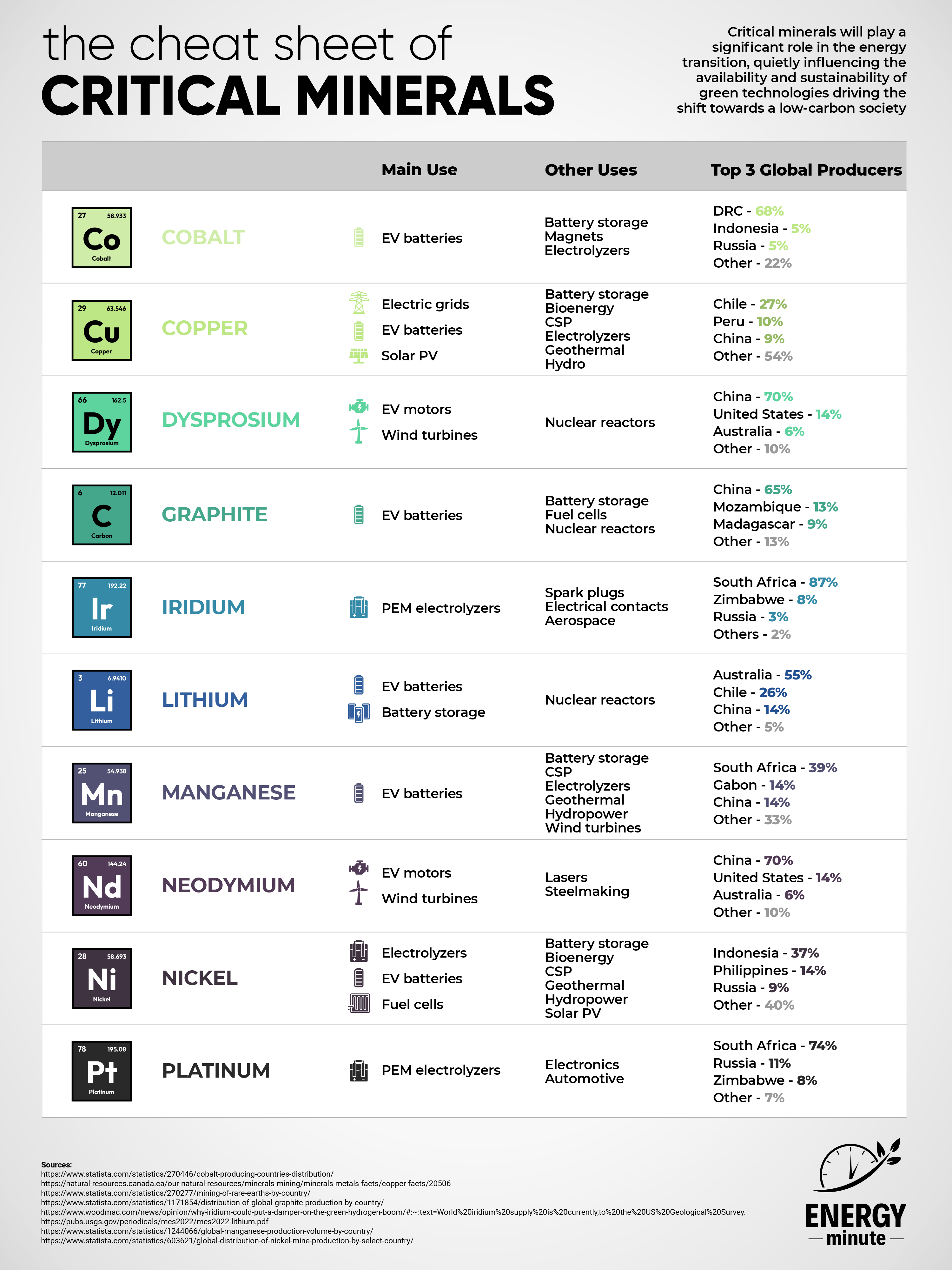Critical Minerals: The Cheat Sheet

Critical minerals are a group of naturally occurring elements and compounds that hold exceptional significance in the global economy and the development of cutting-edge technologies. These minerals are deemed “critical” due to their indispensable role in various industries, including clean energy, electronics, defense, and healthcare.
Their scarcity, geopolitical implications, and essential applications make them pivotal in the 21st century, as they underpin the advancement of renewable energy, digital innovation, and national security.
Critical minerals and their uses
Cobalt
- Main Use: Cobalt is essential in lithium-ion batteries for electric vehicles (EVs) and energy storage systems.
- Other Uses: It’s used in superalloys, magnets, and as a catalyst in the petroleum and chemical industries.
Copper
- Main Use: Copper is crucial for electrical wiring and infrastructure in renewable energy systems, such as wind turbines and solar panels.
- Other Uses: It’s used in electric motors, transformers, and power generation equipment.
Dysprosium
- Main Use: Dysprosium is used in the production of high-strength permanent magnets for wind turbines and EVs.
- Other Uses: It’s utilized in nuclear reactors and lighting systems.
Graphite
- Main Use: Graphite is a key component in the anodes of lithium-ion batteries.
- Other Uses: It’s used in lubricants, fuel cells, and as a moderator in nuclear reactors.
Iridium
- Main Use: Iridium is used as a catalyst in proton exchange membrane fuel cells (PEMFCs) for clean energy generation.
- Other Uses: It’s used in spark plugs, electrical contacts, and in the aerospace industry.
Lithium
- Main Use: Lithium is a primary component in lithium-ion batteries used in EVs and energy storage.
- Other Uses: It’s used in pharmaceuticals and as a heat-transfer medium in advanced nuclear reactors.
Manganese
- Main Use: Manganese is used in the cathodes of lithium-ion batteries and as an alloying element for steel.
- Other Uses: It’s used in the production of aluminum alloys and in water treatment.
Neodymium
- Main Use: Neodymium is a critical element in high-strength magnets for wind turbines and electric vehicle motors.
- Other Uses: It’s used in lasers, glass dyes, and as a component in certain types of steel.
Nickel
- Main Use: Nickel is used in the cathodes of lithium-ion batteries and as an essential component in hydrogen fuel cell technology.
- Other Uses: It’s used in stainless steel production and in various alloys.
Platinum
- Main Use: Platinum is used as a catalyst in hydrogen fuel cells for clean energy production and in the automotive industry.
- Other Uses: It’s used in jewelry, electronics, and medical devices.
What the International Energy Agency has to say
Sources
https://css.umich.edu/publications/factsheets/material-resources/critical-materials-factsheet
https://www.energy.gov/cmm/what-are-critical-materials-and-critical-minerals




